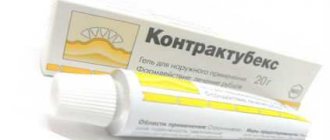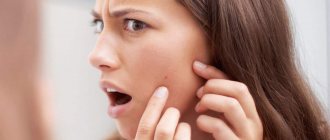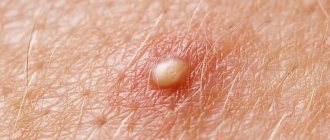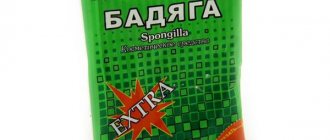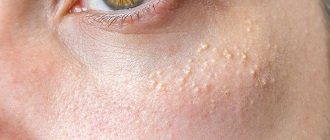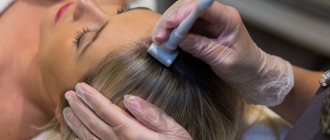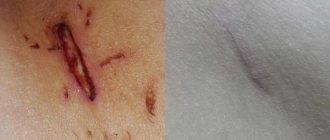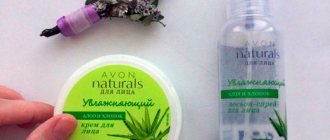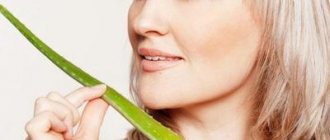Fighting acne takes a lot of effort and money, but you always, especially the weaker half of the population, want to look beautiful. If treatment for rashes is not started in time, then over time there will be a lot of them, additional discomfort, pain, and severe irritation will be added.
At home, you can use aloe for acne on your face. This plant contains an increased level of useful components, due to which all rashes are quickly eliminated, the condition of the skin improves and its structure is normalized.
Does it help?
Aloe is truly a magical plant. The list of diseases and conditions that are treated with aloe can be continued endlessly.
For internal use, aloe juice is used for:
- ophthalmological diseases;
- diseases of the cardiovascular system;
- colds (to increase immunity);
- problems of the gastrointestinal tract;
- problems of the nervous system.
For external use, aloe juice helps with mechanical damage to the skin (wounds, scratches, burns), allergic diseases, pain in muscles and joints, and is used to accelerate hair growth and in cosmetology.
Its composition
Note that the tree-like plant has the best healing properties in the fight against acne. Its leaves contain the maximum concentration of substances with anti-inflammatory and antibacterial effects.
It doesn’t matter whether you use pulp or juice to prepare a mask or lotion, because the composition of aloe is abundant:
- amino acids – more than twenty;
- vitamins - A, E, C, B, beta-carotene;
- microelements and macroelements;
- flavonoids.
Not only acne, but also other skin problems (acne, inflammation) can be cured by such a set of beneficial elements with regular use. As a result of complex effects on the skin:
- pores are cleansed of fat and impurities;
- the functioning of the sebaceous glands is regulated;
- skin is moisturized;
- tissue regeneration accelerates;
- wounds heal faster;
- the walls of the capillaries are strengthened;
- any type of skin irritation is relieved.
The unique composition of the plant, with a successful combination of vitamins and minerals with antioxidants and amino acids, allows you to obtain a lasting therapeutic and cosmetic effect.
NOTE!
To quickly get rid of blackheads, acne and pimples, as well as to rejuvenate your facial skin, we recommend that you familiarize yourself with this effective remedy .
Find out more...
Its regular use will help you get rid of not only acne, but also many skin problems.
Use of juice in folk cosmetology
A folk method for treating cosmetic problems has long discovered the beneficial properties of aloe.
In order to use aloe juice in cosmetology with maximum benefit, the plant must be prepared in advance, following simple rules:
- the most useful aloe leaves are those located at the very bottom, near the ground;
- after cutting, the leaves must be thoroughly washed so that the soil does not get into the juice;
- washed and dried leaves are wrapped in an opaque cloth and placed in the refrigerator or on the balcony for two weeks. It has been proven that staying in a dark and cold place produces beneficial substances in aloe leaves.
- blackened leaves cannot be used;
- the leaves prepared in this way are ground in a blender or meat grinder or finely chopped with a knife;
- the resulting pulp is filtered through cheesecloth to remove lumps.
Prepared aloe juice is stored in the refrigerator in a glass container for no longer than a week.
Preparation of aloe juice
There are several ways to use aloe - this is specially prepared juice and a decoction of the leaves.
- The juice is prepared as follows: cut off a leaf of the plant, wrap it in a bandage or gauze and hide it in the refrigerator for a month. After this period, the leaf is taken out and kneaded into a paste, which is used to prepare masks.
- You can also prepare a decoction. To do this, a few leaves should be finely chopped and poured with boiling water. The plant is simmered over low heat for 10-15 minutes, then cooled and strained. The resulting decoction can be used as a facial toner.
Important: when using aloe concentrate purchased at a pharmacy, you should dilute the ampoules with clean water in a ratio of 1:2, that is, take two parts of water for one part of juice. A good option would be to use mineral water without gas.
Using aloe for acne
Aloe juice has a number of properties that help get rid of acne, namely:
- regenerating;
- anti-inflammatory;
- antibacterial;
- cleansing;
- moisturizing.
Aloe not only relieves redness and reduces inflammation on the skin, but also disinfects the face, thereby preventing the occurrence of new inflammations. Aloe contains about 200 beneficial substances, including vitamins A, B, C and E, which nourish and rejuvenate the skin.
The forms of using aloe are also varied, which everyone can choose for themselves - from wiping the face with a piece of the stem to homemade cream.
Homemade masks
To achieve the best effect, aloe juice can be combined with other products and applied to the face as a mask. Such masks, in addition to getting rid of acne, can also perform other functions, for example, nourish the skin or tighten pores.
Some simple homemade recipes are given below.
- Egg yolk mask.
For the recipe we will need:
- aloe juice;
- milk (for normal skin) or cream (for dry skin);
- egg yolk.
Add two tablespoons of aloe juice and two tablespoons of milk (cream) to a well-beaten yolk. Mix thoroughly. Apply to face for 15-20 minutes and rinse with warm water without using soap or other products. The yolk in the mask nourishes the skin, and the milk (cream) moisturizes it.
- Egg white mask.
This is a variation of the previous mask, but for oily skin.
We will need:
- aloe juice;
- lemon juice;
- egg white.
The preparation method is the same as the previous mask. Beat the egg white well and add two tablespoons of aloe juice and lemon juice to it. Apply on face for 15-20 minutes and rinse off. Egg white tightens pores, and lemon juice removes oily shine from the face.
- Cleansing mask with clay.
Dilute a teaspoon of white or blue clay with aloe juice until you obtain a mushy consistency. Apply the resulting paste to your face for 15 minutes and rinse with warm water.
- Mask for oily skin with radish.
We will need:
- aloe juice;
- dried sage;
- radish.
Prepare a decoction of sage according to the instructions on the package. We only need two spoons, but the rest can be drunk instead of tea. Mix two tablespoons of grated radish with the same amount of aloe juice and sage decoction and leave for 15-20 minutes. This mask will tighten the pores and give the skin a more youthful, fresh look.
Find out the causes of whiteheads on the face. How to get rid of acne using ointments? Follow the link.
Video: Anti-rash mask
Lotions
If you simply don’t have enough time to keep a mask on your face, lotions will come to the rescue. Unlike masks, they are quickly applied and do not need to be washed off.
For the simplest lotion we will need:
- 2-3 large aloe leaves;
- 1 liter of boiled water at room temperature.
Finely chop the aloe leaves and add water. Bring the water to a boil, boil the mixture for 5-7, then cool and strain through cheesecloth. Store the resulting lotion in a tightly closed glass container in the refrigerator for no more than 7 days.
Lotions can also use other ingredients to improve their effectiveness.
For a lotion with a moisturizing and regenerating effect we will need:
- aloe juice;
- vitamin E (in ampoules);
- ascorbic acid (in ampoules);
- mineral water.
Mix two tablespoons of aloe juice with 4 ml of vitamin E and 4 ml of ascorbic acid. Pour 100 ml of mineral water into the resulting mixture. This lotion also needs to be stored in the refrigerator for no more than a week, using glass containers.
Tinctures
To avoid the need to prepare a new batch of lotion every week, you can use aloe juice in the form of tinctures. Due to the alcohol in their composition, tinctures can be stored in the refrigerator for quite a long time.
To prepare the tincture, take ethyl alcohol or vodka and aloe juice in the following ratios:
- 100% alcohol – 6 parts juice to 1 part alcohol;
- 70% alcohol – 4 parts juice to 1 part alcohol;
- 40% vodka – 2 parts juice to 1 part vodka.
Place the resulting mixture in a cool, dark place (preferably on the balcony) and let it brew for 10 days to three weeks. Wipe your face with the resulting tincture in the morning and/or evening, depending on your skin type.
Do not forget that alcohol dries out the skin - people with dry skin should use the tincture only in the evening and possibly every other day if the skin is too dry. Dry skin stimulates the secretion of sebum, so it is important not to overdo it with the tincture. After use, the skin must be moisturized with face cream.
Ointments
The regenerating property of aloe allows it to be widely used in the cosmetics industry as part of creams and ointments. You can also make your own aloe cream. To do this, purchase a cream base from a specialized handmade cosmetics store and add aloe juice to it at your discretion.
If it is not possible to order a special base, then you can use regular Vaseline. This cream does not store for long - a maximum of two weeks in the refrigerator.
Rubbing
Aloe can be used without excipients. All you need to do is apply the juice to a cotton pad and wipe your face morning and evening. You can also use not cotton wool, but a piece of the plant itself.
For additional skin toning, you can make cosmetic ice from aloe. First, make a decoction of any medicinal herb of your choice. For normal skin, sage is suitable, for oily skin, calendula, and for dry skin, you can take linden. Add 2 tablespoons of aloe juice to the decoction for each liter of decoction.
Cool the resulting mixture and pour into ice cube trays. When the broth freezes, you can wipe your face with the resulting cubes.
The healing power of aloe
Aloe is often used in cosmetology to solve many skin problems. Many people grow this simple plant at home, so you can use fresh leaves of the plant to make masks. If you don’t have fresh agave at home, the concentrate can be easily purchased at a pharmacy at an affordable price.
Aloe juice contains:
- essential amino acids;
- complex of vitamins;
- natural antioxidants;
- trace elements and lignins.
The juice contains B vitamins, which have an astringent effect. Vitamin “C” improves skin turgor, and the combination of vitamins “A” and “E” have an antioxidant effect, protecting the skin from external negative influences throughout the day. Lignins in the composition promote the penetration of plant components into the deep layers of the epidermis.
Using masks for oily skin with the addition of aloe:
- helps tighten pores;
- deeply moisturizes the skin;
- regulates the activity of the sebaceous glands;
- has an astringent effect, drying out acne and accelerating the healing process.
Aloe can be used to moisturize any skin type. The juice of this plant has a positive effect on sensitive skin, relieving irritation and deeply moisturizing.
Contraindications
Like any remedy, aloe juice has its contraindications.
Basically, they relate to the internal use of aloe juice, but external use also has its limitations, namely:
- individual intolerance;
- pregnancy and breastfeeding;
- oncological diseases.
To rule out an individual intolerance or allergic reaction to aloe, it is enough to conduct a small test. Rub aloe juice onto the skin on the bend of your elbow and do not rinse. If after 24 hours no redness or other reactions appear in this area, then you can tolerate aloe juice normally.
If you are pregnant or breastfeeding, you should consult your doctor before using aloe. People undergoing treatment for cancer should not use aloe, as this plant stimulates the growth of cells, including cancer cells.
Of course, each organism is individual and the condition of the skin depends on many factors: nutrition, stress, heredity, etc. Sometimes skin problems simply cannot be treated with topical treatments without medication or lifestyle changes. However, reviews of the use of aloe are mostly positive.
Many claim that aloe, if it does not get rid of rashes, then significantly reduces them and relieves inflammation. Do not forget about the financial side of the issue - everyone who uses aloe for problem skin notes that this plant is unpretentious in care and requires virtually no financial costs for it.
Composition of masks with aloe
A face mask with aloe for acne is prepared based on the following products:
- kaolin (based on it, face masks are prepared from white clay to cleanse the skin);
- kefir;
- ether extracts;
- egg white;
- lemon juice.
To prepare the mask, you use both a decoction of fresh leaves and an aloe ampoule purchased at a pharmacy.
- Kaolin (white clay) is known for its absorbent properties. This substance contains a large number of microelements that help accelerate skin regeneration, smooth out fine wrinkles, and also regulate the activity of the sebaceous glands.
- Kefir is often used to care for oily skin. This product tightens pores well and whitens the skin, while moisturizing and saturating it with beneficial amino acids and vitamins. To care for oily skin, only low-fat sour kefir is used.
- Essential oils and extracts are added to the mask to provide antiseptic support. To care for oily skin, you will need eucalyptus, tea tree and grapefruit oils. It is these extracts that will help get rid of acne faster and tighten pores.
- Egg whites combined with lemon juice are a time-tested remedy for tightening pores. These two products dry out the skin, speeding up the healing process.
Photos before and after
The healing properties of aloe are very diverse and have long been known: it has a regenerating, anti-inflammatory, moisturizing, and nourishing effect.Read the reasons for whiteheads on the chin in women. What medications to use for acne and pimples on the face? The answer is here.
What are conglobate globular acne? Click go.
These properties are applicable not only for wound healing, but also for cosmetic purposes. If your aloe is sitting idle on the windowsill, take advantage of its magic right now.
What are the benefits of aloe for the face?
Important! Aloe against acne is prescribed not only by cosmetologists, but also by many dermatologists as part of medical therapy. The popularity of this natural remedy is associated with its unique composition, which contains a large number of useful components.
The rich composition of this plant has a number of beneficial properties:
- aloin. This is an active substance that is part of the peel of the leaves. It gives the leaves a bitter taste. When used, it is this element that creates a protective barrier on the surface of the skin; it protects against the penetration of negative factors into the skin that cause rashes and acne;
- pectin. This substance is part of a group of polysaccharides that have a cleansing and moisturizing effect;
- catechins are flavonoids. Due to these elements, blood circulation is normalized, which saturates the skin with oxygen, thereby eliminating inflammatory processes;
- carotenoids are pigments that have a regenerating effect on damaged areas of the epidermis with abscesses and ulcers. Also, these components eliminate redness and inflammation;
- tannins or phenols. These elements ensure the narrowing of enlarged pores, have an antibacterial, bactericidal effect, and help quickly eliminate all acne;
- organic acids. Aloe contains cinnamon, citric, malic, l-coumaric, and succinic acid. These types of acids provide quick elimination of acne, quickly restore tissues that are damaged as a result of the inflammatory process;
- Aloe contains vitamins B, C, E, A. These elements are required for proper nutrition of the various layers of the epidermis. They improve metabolic processes, due to them the production of new collagen and elastin fibers occurs, which ensure rapid recovery from acne;
- increased levels of microelements. These substances take an active part in reducing the inflammatory process on the face;
- Due to the fact that the composition contains mineral salts, when using aloe, the maintenance of water-salt balance is observed.
Aloe lotion
Making lotion is quite easy. To do this you need to mix 2 tbsp. l. ethanol and 8 tbsp. l. squeezed aloe juice. It is recommended to treat acne-affected skin areas with this product. It is advisable to do this 2 times a day: morning and evening. And you should also wipe your face with lotion after removing makeup. This remedy is not always effective for advanced forms of acne. To treat such problems, it is best to use compresses or an aloe mask.
Return to contents
Acne prevention
Those with problem skin are advised to undergo preventative procedures to prevent the occurrence of acne. Rubbing the skin with aloe juice is suitable for these purposes. This method is ineffective in the presence of large, inflamed pimples. But, it helps well with minor acne.
Rubbing should be done 2 times a day: in the morning and immediately before bed. The face must be clean during the procedure, so if cosmetics were previously applied, it must be removed.
To wipe the skin, you can prepare your own healing products:
- Aloe decoction. The leaves of the plant are crushed and ground to a homogeneous consistency. The resulting mass is poured into 100 ml of boiling water and mixed thoroughly. Place on low heat for 30 minutes. Cool the broth. The resulting product is applied to problem areas of the skin 2 times a day.
- Aloe lotion and calendula tincture. For cooking you will need 8 tbsp. l. aloe juice and 2 tbsp. l. calendula tinctures. The ingredients are mixed well, after which the product is ready for use. It should be stored in the refrigerator in a hermetically sealed container.
These products are used to wipe problem areas of the skin, and if there are small pimples, they are applied pointwise to each individual pimple.
Return to contents
